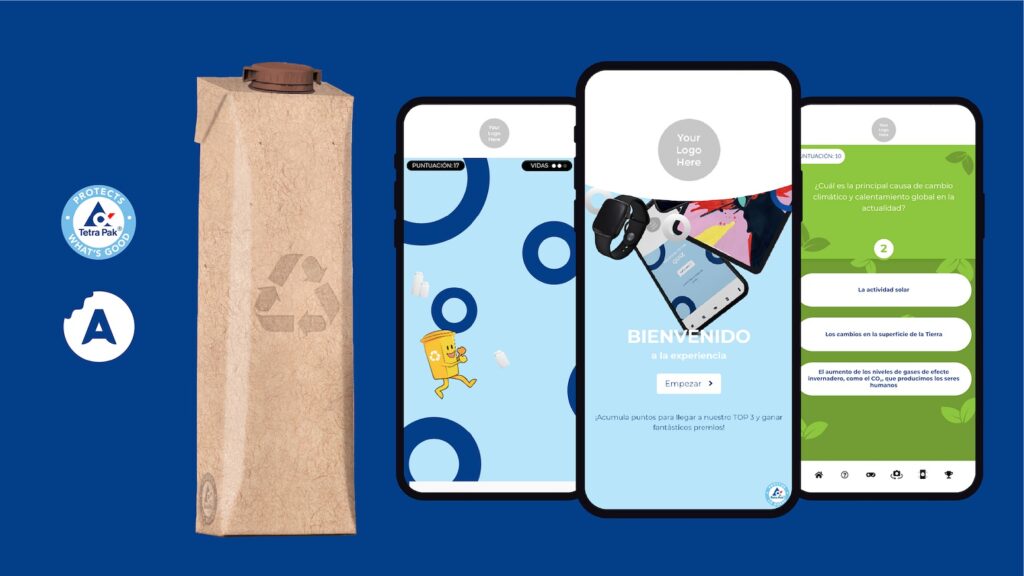By Jenny Stanley
Recently, I hosted a webinar with industry experts Güneri Tuçgu from r-pac International and Randi Boehner from Digimarc, and the conversations we had reinforced some critical truths about proving business value in this space.
I’ve spent years helping brands navigate the world of connected packaging. Having seen campaigns deliver three minutes of engagement time and 20-30% increases in sales, I’m passionate about helping brands move beyond viewing this as a ‘nice to have’ marketing gimmick to understanding it as a strategic necessity.
My top five takeaways for brands considering their first connected packaging initiative include:
1. Think savings, not just spending
One of the most powerful shifts discussed, is Güneri’s approach to return on investment (ROI) conversations. Instead of asking clients for budget to fund connected packaging campaigns, he now focuses on quantifying the problems they’re solving. Whether it’s counterfeiting costing companies millions, supply chain inefficiencies or parallel imports, the conversation changes when you’re saving £10-50 million.
Randi’s case study with online shopping brand, Schnucks, perfectly illustrated this principle. It achieved a 40% reduction in shrink at their fresh food stations – far exceeding ROI benchmarks. The solution didn’t just pay for itself; it became a profit centre. When you frame connected packaging as revenue protection and operational efficiency, rather than marketing expense, the business case becomes compelling.
2. Your product IS a media channel
I always tell clients that connected packaging transforms your product into an incredibly targeted media channel. You have your consumer and your product together at the same time – that’s premium real estate that no other channel can offer.
But here’s my 101 rule: don’t create an experience that simply links to your website. That’s almost insulting to consumers who take the time to scan. Instead, think about meaningful value exchange. What can you offer that’s worth their attention? Whether it’s authentication, sustainability information or exclusive content, make it count.

3. Start small, think big, collaborate smart
Both Randi and Güneri emphasised the power of pilot programs, and I couldn’t agree more. You don’t need to revolutionise your entire product line overnight. Start with a seasonal item, test a specific use case or focus on one particular pain point.
What really resonated with me was Güneri’s point about collaboration. No single company can be the master of everything. At Appetite Creative, we see this constantly. The most successful connected packaging initiatives involve partnerships between technology providers, creative agencies and compliance specialists. If you have the right partners, there will be APIs and interoperability that minimise risk while maximising impact.
4. Break down those silos
One of the biggest challenges I see is internal silos within organisations. Marketing wants engagement, supply chain wants efficiency, legal wants brand protection and compliance teams are focused on regulations like the EU’s Digital Product Passport. The beauty of connected packaging is that it can serve all of these needs simultaneously.
When you bring these stakeholders together early, you’re not just splitting costs; you’re multiplying benefits. The conversation shifts from individual department budgets to enterprise-wide value creation.
5. Measure what matters to your goals
The metrics you track should align with your primary objectives. Randi broke this down into three useful buckets: operational impact (efficiency gains, cost reduction), consumer engagement (scan rates, interaction data) and business outcomes (loyalty, margins, strategic insights).
In my experience, successful campaigns track engagement time, repeat visits and has quality data capture. We’ve seen four to five times rescan rates when brands get the experience right. But if you’re focused on supply chain efficiency like Schnucks, your metrics will be completely different – shrink reduction, checkout speed and employee intervention rates.
The key is defining success upfront and ensuring your measurement strategy supports your primary use case.
What excites me most is that we’re at a unique convergence point. Regulatory requirements like the EU Digital Product Passport and GS1’s Sunrise 2027 are making connected packaging mandatory rather than optional. Consumer expectations for transparency and personalisation continue rising. Meanwhile, technology capabilities are advancing rapidly.
This creates an unprecedented opportunity for forward-thinking brands to gain competitive advantage. As Randi noted, while many brands are pulling back in our current economic climate, those who invest now in connected packaging will leap ahead of the competition.
The question isn’t whether connected packaging will become standard – it’s whether your brand will be leading the charge or playing catch-up. Based on everything I’ve seen, the brands that start now, with the right partners and clear objectives, will be the ones defining the future of consumer engagement.
The scan is just the beginning. The real value lies in what happens next.
Jenny Stanley is MD at Appetite Creative, for more information visit: appetitecreative.com and watch ‘Beyond the Scan: Proving the Business Value of Connected Products’ webinar here.
Source: Appetite Creative



You must be logged in to post a comment Login